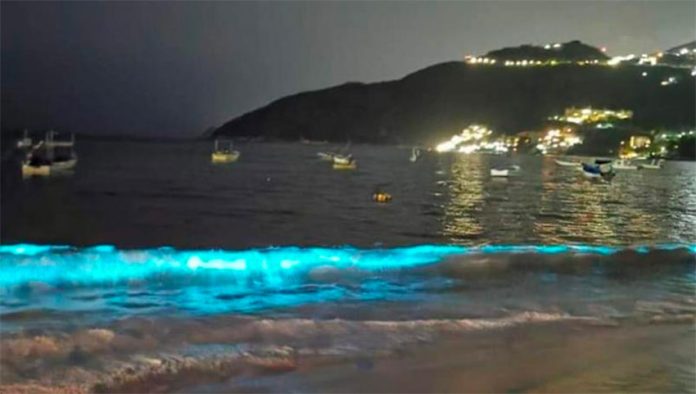Bioluminescent plankton was observed in the waves on an Acapulco beach for the first time in over 60 years on Monday night after the Covid-19 pandemic has kept people out of the water for nearly a month.
Photos and videos of waves shot through with streaks of neon blue on Puerto Marqués beach the night before went viral on social media early Tuesday morning. Some excited residents even took the opportunity to splash around in the unusually glowing waters.
Although the phenomenon may seem rare, biologist Enrique Ayala Duval said that the phytoplankton that cause it are actually more prevalent than their fear of human activity may have people believe.
“Marine bacteria are the most abundant of the bioluminescent organisms,” he said, adding that they can live independently or symbiotically on the surfaces, in the cavities or digestive tracts of other marine animals.
Some residents of Acapulco were lucky enough to see a whale surface in the main bay on the very first day of quarantine, and Monday night’s event was another example of the natural world’s propensity to retake the spaces humans have left empty during the Covid-19 pandemic.
Some who tweeted about the phytoplankton lamented the influence that human activity has on the natural world.
“The bad part is that human beings will always be there to ruin everything,” said one Twitter user who posted a video of someone riding a flyboard in the luminescent waves.
The absence of people on the beach in Oaxaca brought out crocodiles earlier this month. The reptiles usually spend their days hidden away in the waters of the lagoon at La Ventanilla, but were spotted roaming the beach.
Sources: SDP Noticias (sp), México Desconocido (sp)
